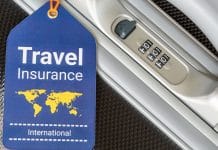We’ve all been there—checking our bank statements at the end of the month and wondering, “Where did all my money go?” Whether you’re saving for your next European adventure or trying to build an emergency fund for unexpected medical costs while traveling, cutting back on expenses is a skill that pays dividends—literally. For health-conscious travelers like you who value both experiences and financial security, finding that sweet spot between enjoying life and saving money is crucial.
Understanding Your Spending Habits
Before you can cut expenses, you need to know where your money is actually going. Most of us have a “money leak”—those small, recurring expenses that seem insignificant but add up quickly.
Track Every Dollar
Start by monitoring all expenses for a month. Use apps like Mint, YNAB (You Need A Budget), or even a simple spreadsheet. Categorize your spending into:
- Fixed costs: Rent/mortgage, insurance premiums, loan payments
- Variable necessities: Groceries, utilities, transportation
- Discretionary spending: Dining out, entertainment, shopping
- Travel fund: Your dedicated savings for adventures
Once you have this data, you’ll spot patterns and potential areas to trim. Many people are shocked to discover they spend more on coffee shops in a month than on their travel insurance for an entire trip!
Smart Ways to Cut Back on Daily Expenses
Food & Grocery Strategies
Meal Planning: Your Secret Weapon
Health-conscious travelers already understand the importance of what goes into their bodies. Apply that same mindfulness to grocery shopping:
- Plan meals weekly based on sales and seasonal produce
- Prep meals in bulk to avoid expensive takeout when you’re busy
- Shop with a list and avoid impulse purchases
- Consider grocery delivery services—they often reduce impulse buying, saving you money despite the delivery fee
Dining Out Alternatives
Instead of eliminating restaurant meals:
- Opt for lunch specials instead of dinner
- Choose appetizers and split entrées
- Host potluck dinner parties instead of meeting friends at restaurants
- Look for restaurant deals on Groupon or similar sites
Transportation Cost-Cutting
Transportation is often our second-largest expense category after housing. Smart adjustments here can yield significant savings:
- Combine errands to save on gas and time
- Consider public transportation for daily commutes
- Evaluate your car situation—could you downsize to one vehicle or switch to a more fuel-efficient model?
- Use apps like GasBuddy to find the cheapest fuel prices
- Check if your insurance offers low-mileage discounts
Housing Hacks
While moving to a cheaper place offers the biggest savings, it’s not always practical. Instead:
- Negotiate rent when renewing your lease
- Refinance your mortgage if interest rates have dropped
- Rent out a spare room on Airbnb when you travel
- Reduce utility bills through energy-efficient upgrades and habits
Slash Those Subscriptions
The subscription economy makes it dangerously easy to sign up for services you rarely use. The average American spends over $270 monthly on subscriptions, often without realizing it.
Subscription Audit Checklist:
- Streaming services (Do you need Netflix, Hulu, Disney+, AND HBO Max?)
- Music services (Spotify, Apple Music, etc.)
- Fitness apps and memberships
- Magazine and news subscriptions
- Software and cloud storage
- Monthly box subscriptions
- App subscriptions on your smartphone
Keep only what you genuinely use weekly. For everything else, consider these alternatives:
- Share accounts with family members when terms allow
- Use free versions with ads
- Utilize your public library for books, movies, and magazines
- Switch to annual payments for services you’ll keep (usually 15-20% cheaper)
Smart Shopping Strategies
Health-conscious travelers appreciate quality, but that doesn’t mean paying full price:
- Wait 48 hours before making non-essential purchases over $50
- Use price-tracking tools like CamelCamelCamel for Amazon or Honey for automatic coupon application
- Buy quality items that last longer, especially for travel gear
- Shop secondhand for clothing, books, and equipment through apps like Poshmark, ThredUp, or Facebook Marketplace
- Time your purchases around predictable sales (Black Friday for electronics, January for fitness equipment)
Debt Management: Cutting Expenses by Eliminating Interest
When you carry debt, especially high-interest credit card debt, you’re essentially adding a “debt tax” to every purchase you’ve made.
Debt Reduction Strategy:
- List all debts with their interest rates
- While maintaining minimum payments on all debts, focus extra payments on either:
- The highest interest debt (mathematically optimal)
- The smallest balance (psychologically rewarding)
- Consider balance transfer offers or debt consolidation for high-interest debts.
- Automate payments to avoid late fees
Every dollar of interest saved is another dollar toward your travel emergency fund or next adventure.
Health Insurance Optimization
For health-conscious travelers, insurance is non-negotiable—but you can optimize it:
- Review your health insurance plan during open enrollment
- Consider a High-Deductible Health Plan (HDHP) with a Health Savings Account (HSA) if you’re generally healthy
- Compare travel insurance policies carefully—the cheapest isn’t always the best value
- Bundle insurance policies when possible for multi-policy discounts
Saving on Travel-Specific Expenses
As a frequent traveler, you can significantly reduce costs with strategic planning:
- Book flights using incognito browser mode and price-comparison tools
- Travel during shoulder seasons for better deals and fewer crowds
- Use credit card points wisely for flights and accommodations
- Consider travel medical insurance instead of comprehensive travel insurance if your credit card already provides some travel protections
Table: Travel Insurance Cost Comparison
| Coverage Type | Average Cost (% of Trip) | Best For |
| Comprehensive | 5-10% | Long, expensive trips |
| Medical Only | 2-4% | Budget travelers with flexible plans |
| Annual Policy | $200-500 flat fee | Frequent travelers (4+ trips/year) |
| Credit Card Coverage | $0 (card annual fee) | Basic coverage for short trips |
Building an Emergency Fund While Cutting Expenses
The cornerstone of financial security—especially for travelers—is having an emergency fund. Aim for 3-6 months of essential expenses in an easily accessible account.
Emergency Fund Building Strategy:
- Start with a modest goal ($500-1,000)
- Automate small, regular contributions
- Deposit all “found money” (tax refunds, rebates, gifts)
- Keep the fund in a high-yield savings account
Once established, your emergency fund prevents the need to use credit cards for unexpected expenses like emergency medical care while traveling, creating a positive financial cycle.
Technology Tools to Help Cut Expenses
Leverage technology to make expense-cutting easier:
- Budgeting Apps: Mint, YNAB, Personal Capital
- Saving Tools: Digit, Acorns, Qapital
- Cashback Apps: Rakuten, Ibotta, Fetch Rewards
- Bill Negotiation Services: Trim, Billshark, Truebill
- Travel Deal Alerts: Scott’s Cheap Flights, Hopper, Google Flights
Finding Balance: When Not to Cut Back
Being frugal doesn’t mean depriving yourself. Identify what truly matters to you:
- Health investments often save money in the long (quality food, preventative care)
- Experiences that create lasting memories and improved well-being
- Professional development that increases earning potential
- Quality items that improve daily life and last for years
Sometimes spending more upfront—on good walking shoes for travel or quality luggage that won’t break mid-trip—actually saves money over time.
Conclusion: Small Changes, Big Results
Cutting expenses isn’t about deprivation—it’s about intentionality. By making mindful decisions about where your money goes, you create freedom and options for yourself. Start small with 2-3 changes from this article, then add more as they become habits.
Remember: The goal isn’t just to save money for its own sake but to redirect those funds toward what truly matters to you—whether that’s exploring new destinations with peace of mind knowing you’re financially prepared for any health concerns, building long-term wealth, or simply enjoying life more fully with less financial stress.
What expense-cutting strategy will you implement first? Share in the comments below!

























